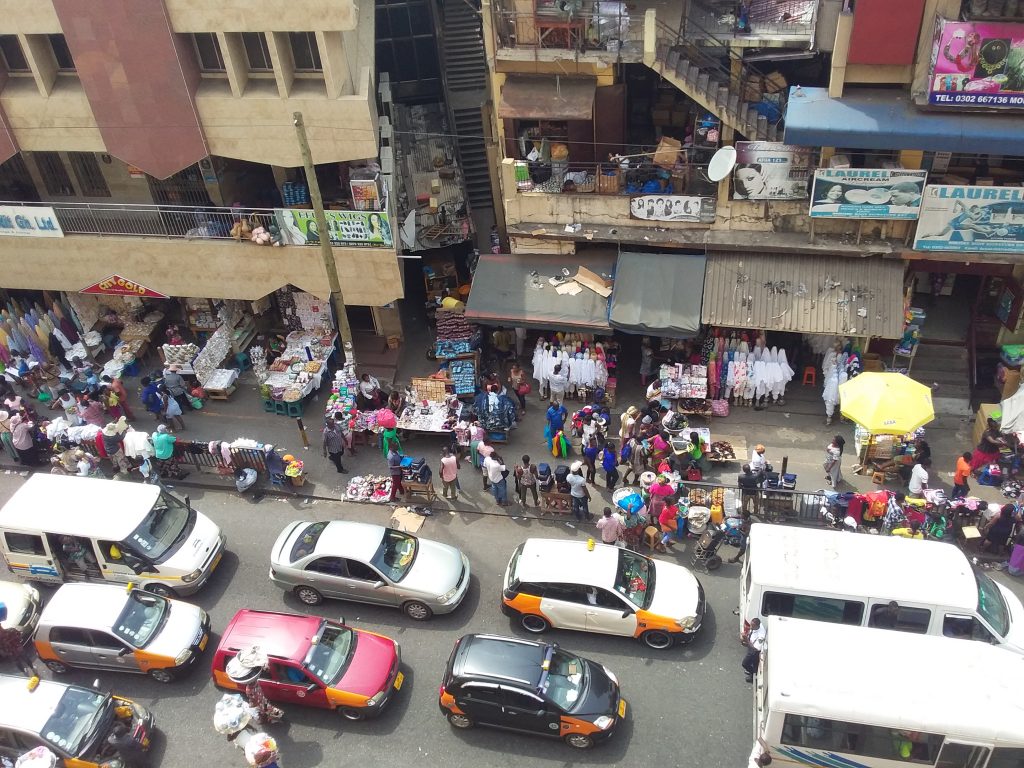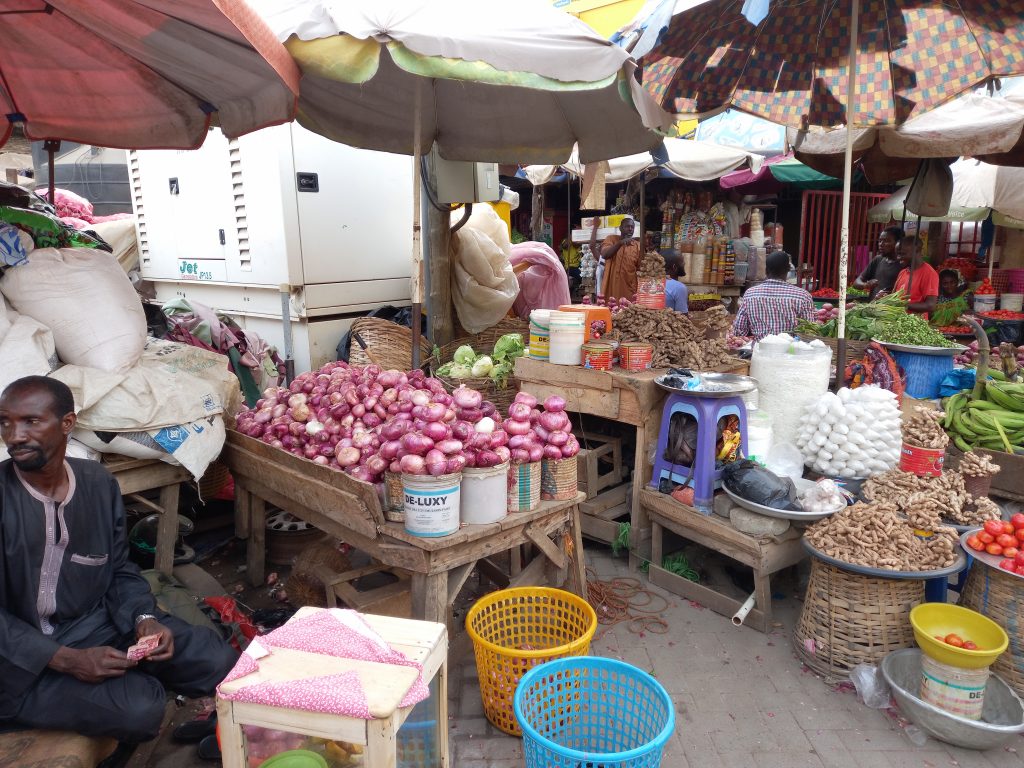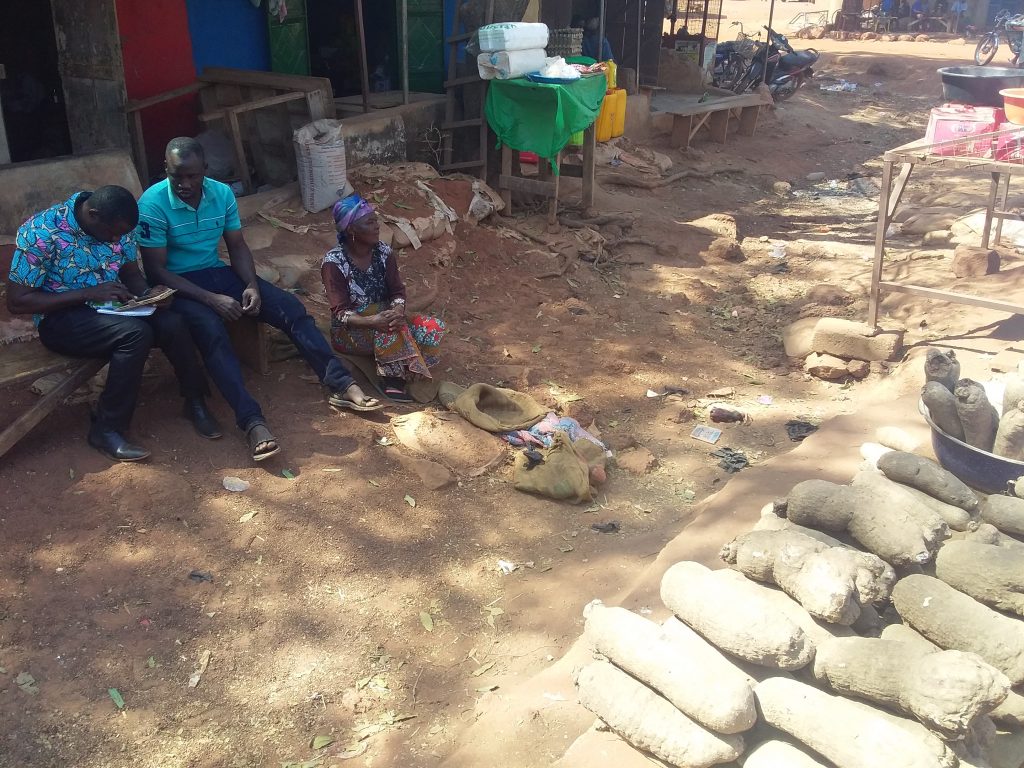A tale of two countries: patterns and drivers of smallholder commercialisation in Ghana and Nigeria

A gardener with his knack sack sprayer at the Institute of Statistical, Social and Economic Research, University of Ghana [Photo credit: Louis Hodey]
Written by: Louis Hodey
What are the emerging patterns of agricultural commercialisation in Ghana and Nigeria? Are there geographical and gender differences in commercialisation among households? How have poverty levels changed over time? What are the key drivers of agricultural commercialisation in the two countries? The current blog, the first of a two-part series, draws answers to these questions from a recent APRA study on the Patterns and drivers of agricultural commercialisation: evidence from Ghana, Nigeria, and Malawi. Findings from the study are based on household-level data from two rounds of Ghana’s Living Standard Surveys (GLSS6 in 2012/13 and GLSS7 in 2016/17); and the two rounds of Nigeria’s General Household Surveys (GHS-Panel) in 2010/2011 (GHS-Panel 1) and 2015/2016 (GHS-Panel 3).
Patterns and dimensions of agricultural commercialisation in Ghana and Nigeria
First, we find that agricultural commercialisation has not changed significantly between 2013 and 2017 in Ghana, although there are farm scale, geographical, and gender heterogeneities. Overall, households in northern Ghana (Northern, Upper East and Upper West regions) are generally less commercialised compared to those in southern Ghana. Further, medium-scale farmers appear more commercialised compared to their counterparts in small-scale farming. Additionally, crop-specific gendered differences in commercialisation emerged in Ghana. For instance, while female-headed households in Ghana are more commercialised in groundnut, male-headed households are more commercialised in tomato.
In Nigeria, the overall commercialisation index declined between 2010 and 2015, though geographical and crop-specific differences exist. Except for the South East and South West zones, the other four zones (North East, North Central, North West and South South) experienced a decline in commercialisation. Further, groundnut, beans, and cocoyam experienced a slight rise in commercialisation while all other crops saw a decline.

Photo credit: Louis Hodey
Dynamics of poverty in Ghana and Nigeria
Between Ghana and Nigeria, the incidence of poverty followed diverse paths. While Ghana reported a decline in poverty incidence from 24.2% to 23.4% between 2013 and 2017, Nigeria reported a rise in poverty incidence from 40.5% in 2010 to 47.7% in 2015. Most importantly, we observed some spatial dynamics to changes in poverty across regions and zones in Ghana and Nigeria. First, although Ghana reported overall decline in poverty between 2013 and 2017, five of the country’s administrative regions – Western, Upper West, Volta, Upper East, and Northern regions – posted increases in the incidence of poverty; with the highest increases reported by the Upper East (10.4%) and Northern (10.7%) regions. Among the regions that experienced a decline in poverty, the Eastern (9.1%) and Central (5.1%) regions recorded the highest reductions in poverty rates. Second, two zones in Nigeria – South East and South South zones – posted declines in poverty, notwithstanding the overall rise in the national poverty rates. More specifically, the South South zone recorded the highest decline in poverty (7.3%), while the North East (20.5%), North West (17.5%), and North Central (12.3%) zones reported the highest increases in poverty over the 2010-2015 period.
A common trend in the dynamics of poverty between Ghana and Nigeria is the concentration of poverty incidence in the northern parts of the countries. Again, poverty remains largely a rural phenomenon in these two West African countries.

Photo credit: Louis Hodey
Drivers of agricultural commercialisation in Ghana and Nigeria
For both countries, we find that poverty status, the use of hired labour and asset ownership are key factors in commercialisation differences across farm households. Further, we find that the location of households predicts level of commercialisation. This suggests that differences in supply-side factors across geographies, such as market access, are driving differences in commercialisation. Essentially, our findings showed that higher expenditure on hired labour and higher asset ownership have a positive effect on household commercialisation; while poor households are less commercialised compared to their non-poor counterparts. This may be the case since poor households often lack critical production inputs to participate in commercialised agriculture.

Photo credit: Louis Hodey
Conclusion and implications for policy and practice
This blog highlights the patterns of agricultural commercialisation, trends in household poverty status, and the importance of different factors in driving the degree of commercialisation in Ghana and Nigeria. First, we revealed that agricultural commercialisation has not changed in Ghana between 2013 and 2017 but declined in Nigeria between 2010 and 2015. Further, that poverty has declined slightly in Ghana yet increased in Nigeria over the study period. For both commercialisation and poverty, we observed geographical and gender heterogeneities. Additionally, we highlight the importance of access to labour and assets as critical to the processes of agricultural commercialisation.
These heterogenous results in patterns and drivers of commercialisation suggest that, to ensure the promotion of inclusive agricultural commercialisation, policies must embrace a comprehensive approach that aims to tackle bottlenecks at different levels – including geographical and gender dimensions. Thus, the design of interventions should be better targeted to capacity building measures (such as training of farmers on commercial agriculture and enhancing their access to credit and input markets) which address these differences and protect households against any risks from commercialisation.
